Science Activities for All Ages
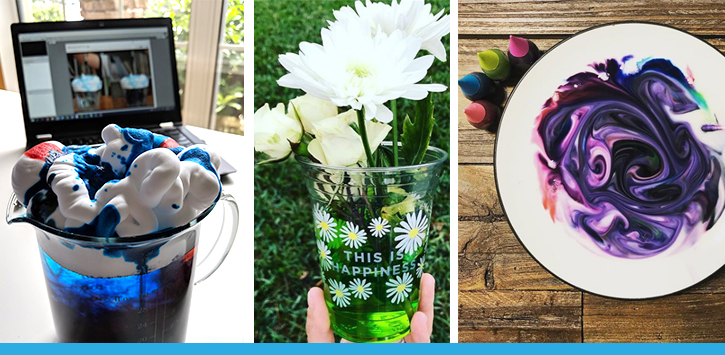 Our Kindergarten students LOVE doing science experiments!
Our Kindergarten students LOVE doing science experiments!
Recently we asked them what their favorite part of Kindergarten has been, and many of them said “science experiments.” Some may think that because we are a virtual school, our kids spend all their time on the computer. This couldn’t be farther from the truth!
We get our Kindergarteners into the physical world as much as possible to have the same hands-on learning experiences you would find in a brick-and-mortar school. This year, they have gone on nature walks, made slime, created straw rockets, seen sound waves at work, and discovered how animals stay warm in icy water…just to name a few!
When we do science experiments during Class Time, our students and teachers prepare the materials beforehand and we go through the steps together. To ensure our students can follow along, we have an external camera that we use to show our students what we are doing up close. Our students can also turn their web cameras on to show us their results and share their thoughts.
Here are the instructions for a few science experiments we did this year!
TIP: Whether you’re a student or a parent, these fun activities make for some cool photos – so keep your camera handy. (Check out the videos on our Instagram to see for yourself!)
Rainbow Milk Science
This is an easy, and fun, science experiment for all ages! Our Kindergarten students had so much fun seeing this science concept at work.
Here’s what you will need:
- Milk
- A plate
- Liquid dish soap
- Cotton swab
- Liquid food coloring
Instructions:
- Pour enough milk onto the plate to cover the bottom and let the milk settle. (NOTE: I tried this with whole milk and it did not work as well; the milk was too thick.)
- Squeeze a few drops of different colors of food coloring into the milk in the center of the plate.
- Put some dish soap on the tip of your cotton swab.
- Touch the cotton swab in the middle of the food coloring drops. DO NOT stir the milk, simply touch the cotton swab to the milk.
Watch the beautiful show of colors!
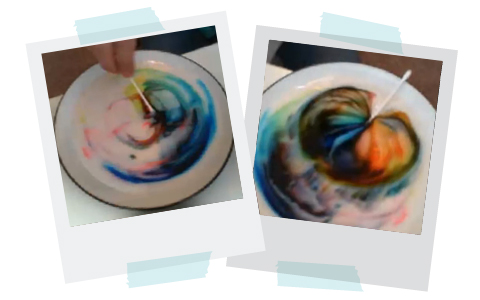
Why does this happen?
All liquids have a property called surface tension, which is like an invisible layer or film on top of the liquid. This is how certain insects, like water striders, can float and move on the water’s surface. This is also what allows the drops of food coloring to sit and not mix into the milk right away. Dish soap breaks surface tension and enables the food coloring to mix through the milk.
Color-Changing Flowers Experiment
Our Kindergarteners were learning about the parts of a plant and we used this experiment to see a flower’s stem at work.
Here’s what you will need:
- White flowers (try to gather a few so you can try different colors)
- Flower vases (a jar or cup will work)
- Water
- Food coloring
Instructions:
- Fill containers (vases/cups) with water until ¼ full.
- Add 10 to 20 drops of food coloring to each container (using a different color in each).
- Keep one flower in a container with no food coloring so you can compare it to the others.
- Have an adult trim the stems of your flowers at an angle before placing them in the vases.
- Put a flower in each vase.
- Check back every few hours to see if your flowers are changing color.
- At the end of your experiment, examine the whole plant carefully (stem, leaves, buds, petals, etc.) to see what parts you can see the food coloring in.
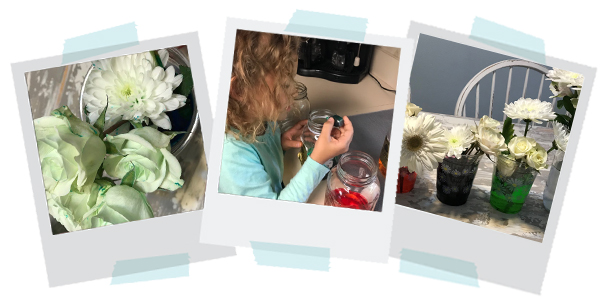
Why do the flowers change color?
The stem “drinks” up the water and the water travels to the other parts of the flower (flower, leaves, etc.)
Rain Clouds in a Jar
Here’s what you will need:
- A large glass or jar (make sure it’s clear)
- Water
- Shaving cream
- Liquid food coloring
Instructions:
- Fill the glass or jar with water – a little more than ¾ full.
- Spray shaving cream on top, covering the water’s surface with a floating, puffy “shaving cream cloud.”
- Squirt a few droplets of food coloring onto the shaving cream.
- Watch the food coloring as it eventually drips down into the water, leaving streaks of color as it “rains” down from the cloud.
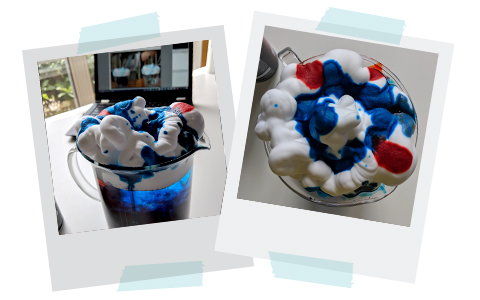
Why does this happen?
Before dripping down into the water, the food coloring sinks through the shaving cream. This rain-like effect is similar to the way gravity pulls water droplets to the bottom of a cloud, where condensation builds before dripping free. When the food coloring hits the water, it demonstrates diffusion as the molecules randomly mix. Try using different water temperatures to see how this effects the diffusion process!
If you’re looking for fun science activities to stay busy during school or summer breaks, give these a try!

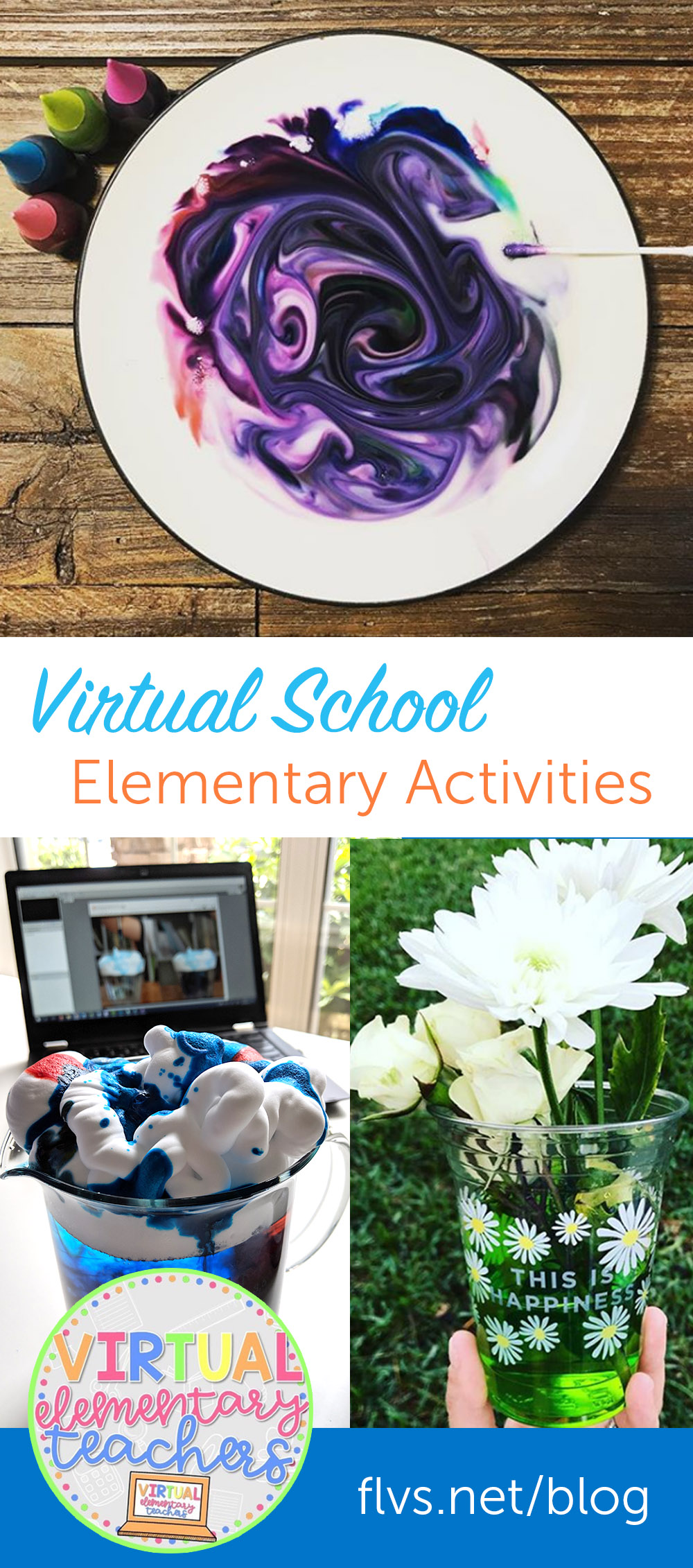
 Cara Piper loves teaching Kindergarten students online with FLVS Flex Elementary! She is a teacher mama, grammar aficionado, blogger, and collector of creative headbands to keep her students engaged during Class Time. Follow her on Instagram @virtualelementaryteachers.
Cara Piper loves teaching Kindergarten students online with FLVS Flex Elementary! She is a teacher mama, grammar aficionado, blogger, and collector of creative headbands to keep her students engaged during Class Time. Follow her on Instagram @virtualelementaryteachers.
These are amazing experiments!! I’m enrolling my daughter in kindergarten this upcoming school season. Is their a homeschooling page or blog that I can subscribe to?
Thank you!!
Thanks Joanna! You can view all of our homeschooling blog posts here: http://blog.flvs.net/category/homeschool-edition. You can also check out the links and resources at the bottom of our homeschool page at https://flvs.net/homeschool.
I am not sure exactly how I ended up here, but these are some great experiments! At my job recently, we had a Mad Scientist themed Parents Night Out and we were looking for easy science experiment ideas for the kiddos to do. I wish I would have found the Rain Clouds in a Jar experiment. SO COOL and simple.
Yes, that is definitely one of our favorites! Very simple and fun for kids and adults alike. 🙂